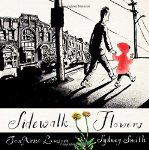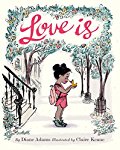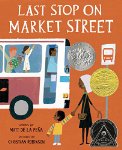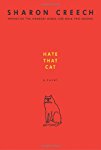For many people a cup of tea offers comfort in times of stress and tribulation, and the making of a pot of tea gives others something to do at such times. People all over the world begin or end their day with a cup of tea, and in some places the making of tea is a ritual that is treasured.
Today's picture book introduces us to a queen who decides that she needs to find someone who can make her the perfect cup of tea. In the process, she discovers something that brings about a big change in her life.
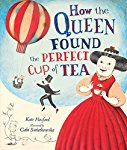 How the Queen found the perfect Cup of tea
How the Queen found the perfect Cup of tea
Today's picture book introduces us to a queen who decides that she needs to find someone who can make her the perfect cup of tea. In the process, she discovers something that brings about a big change in her life.
 How the Queen found the perfect Cup of tea
How the Queen found the perfect Cup of tea
Kate Hosford
Illustrated by Gabi Swiatkowska
Picture Book
For ages 5 to 7
Carolrhoda, 2017, 978-1-4677-3904-7
Every morning the queen gets up and her maids dress her
and do her hair. Her butler makes her tea, which she drinks alone. Over time the
queen’s morning tea ceases to give her any joy or pleasure. In fact, with every
passing day it tastes worse and worse until she decides that she simply cannot
drink the tea any longer. She “must find the perfect cup of tea,” and soon enough
the queen and her long-suffering butler, James, are floating across lands and
seas in a hot-air balloon.
The queen
decides when they have gone far enough and James brings the hot-air balloon
down. The queen then meets a little girl called Noriko who announces that the
queen is just in time because her cats would like to be snuggled. The queen
instructs James to tell Noriko that she does not snuggle anything. Most people
would back down at this point, but Noriko does not. She feels that this is the
perfect time for the queen to try snuggling.
Before the queen
quite knows what is what she is snuggling, and being snuggled, by Noriko’s cat.
The queen finds the whole experience “rather strenuous,” and she asks Noriko if
she might have some tea. Noriko is happy to make some tea, though she expects
the queen to help, which the monarch, who has never even made the effort to
help in the tea making process, manages to do.
Noriko makes the
tea, using the methods favored in her native land of Japan, and then the little
girl and the queen partake of their refreshment, talking all the while.
The queen then
says her goodbyes and she and James sail off in their balloon. Though Noriko’s
tea was delicious, it was not the perfect cup of tea and so the quest must
continue.
All too often,
when something is not quite right we blame something or someone else for the
problem. We never consider that maybe, just maybe, the problem lies with us. In
this delightful picture book we meet a cold, rather stuck up queen who takes a
journey and discovers that sometimes what we are looking for is right under our
noses.
What is charming
about this book is that in addition to the engaging story we also get to learn
about the tea traditions in three countries. At the back of the book the author
also offers us an author’s note in which she tells us about tea, and about the journey
that she took as she wrote this book.
